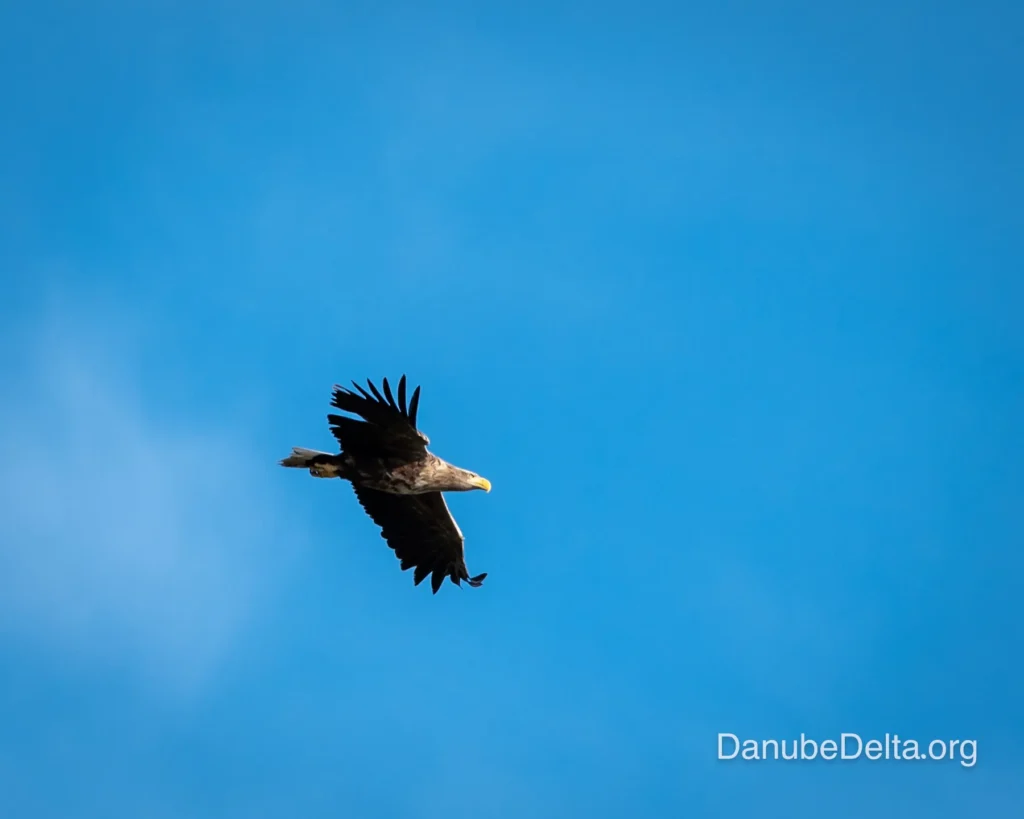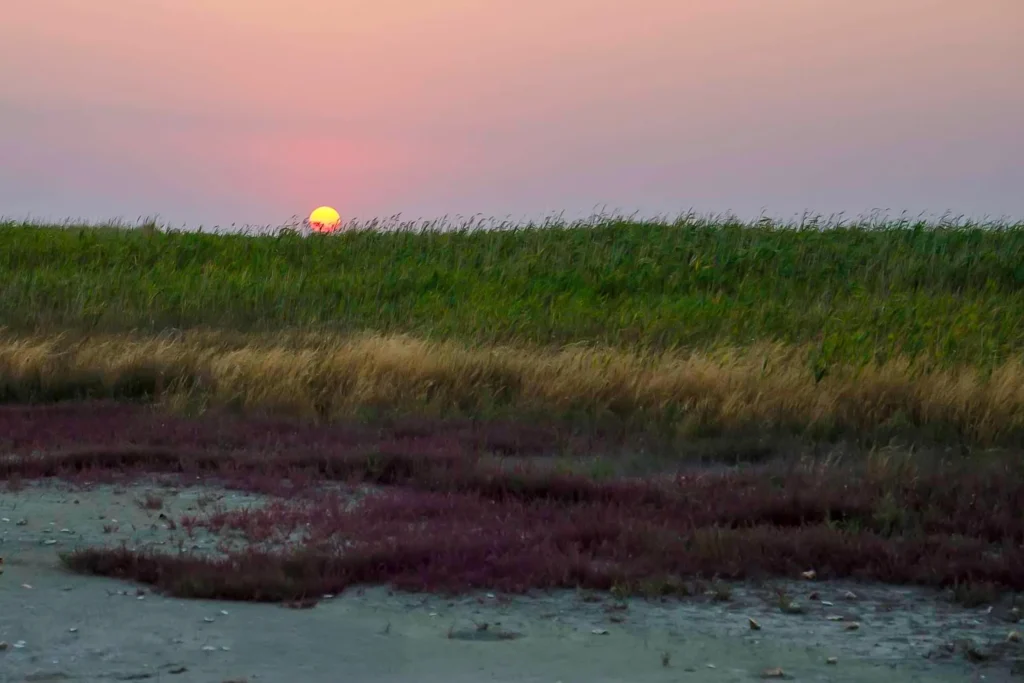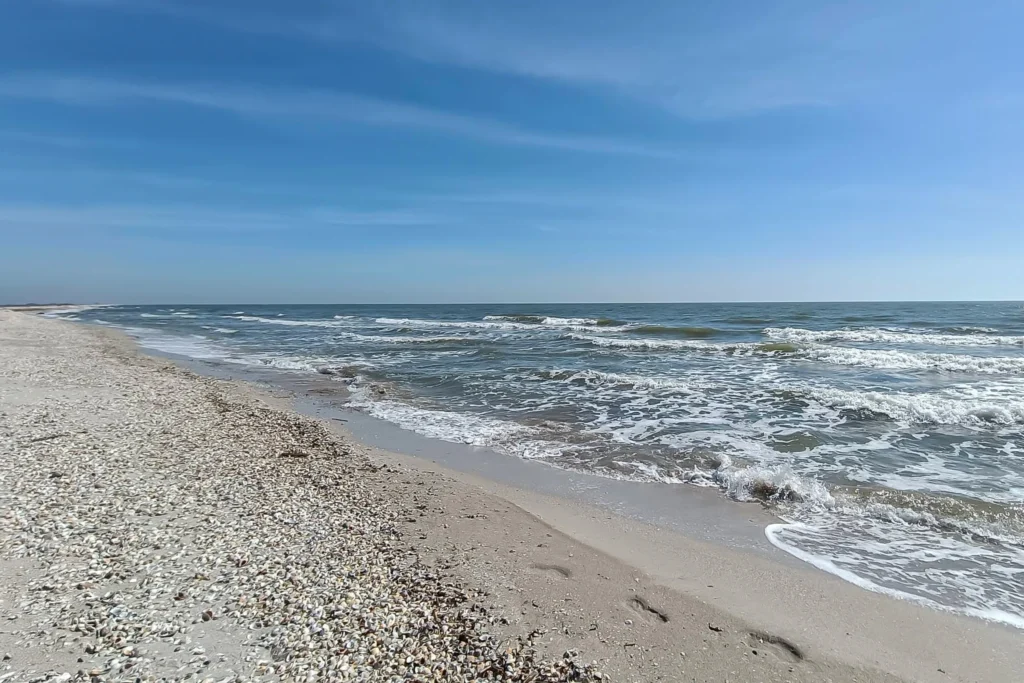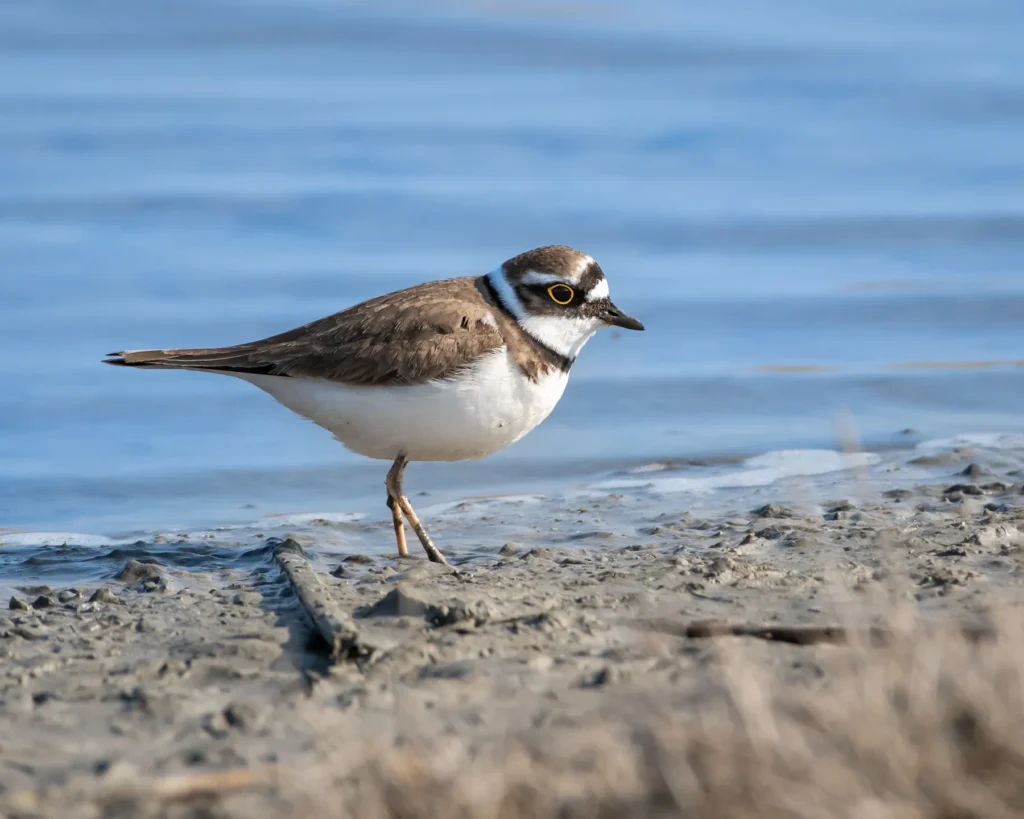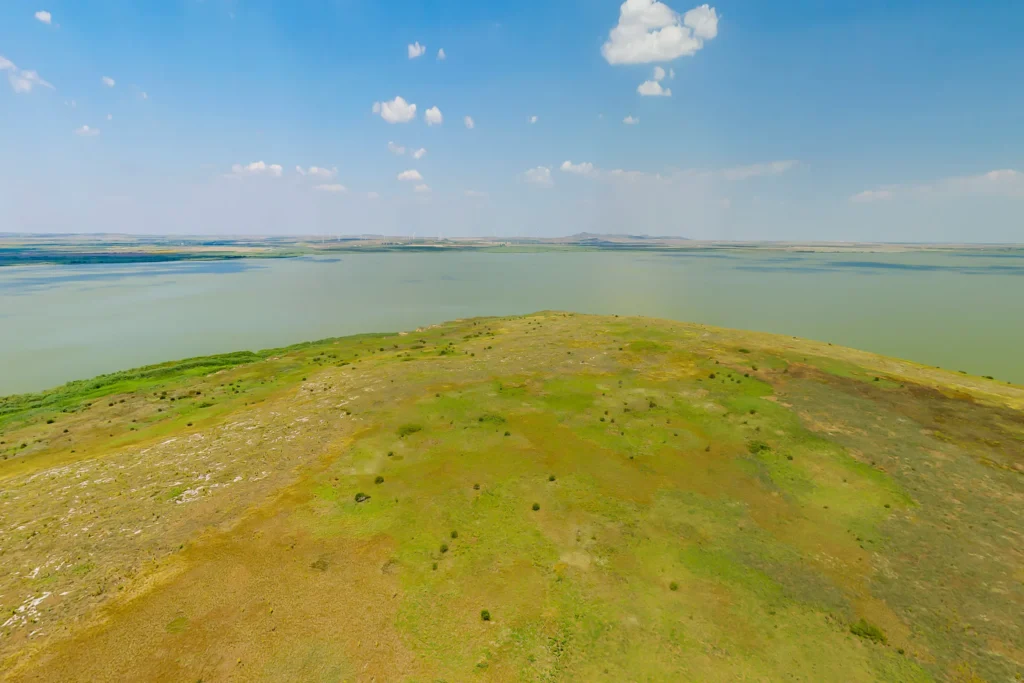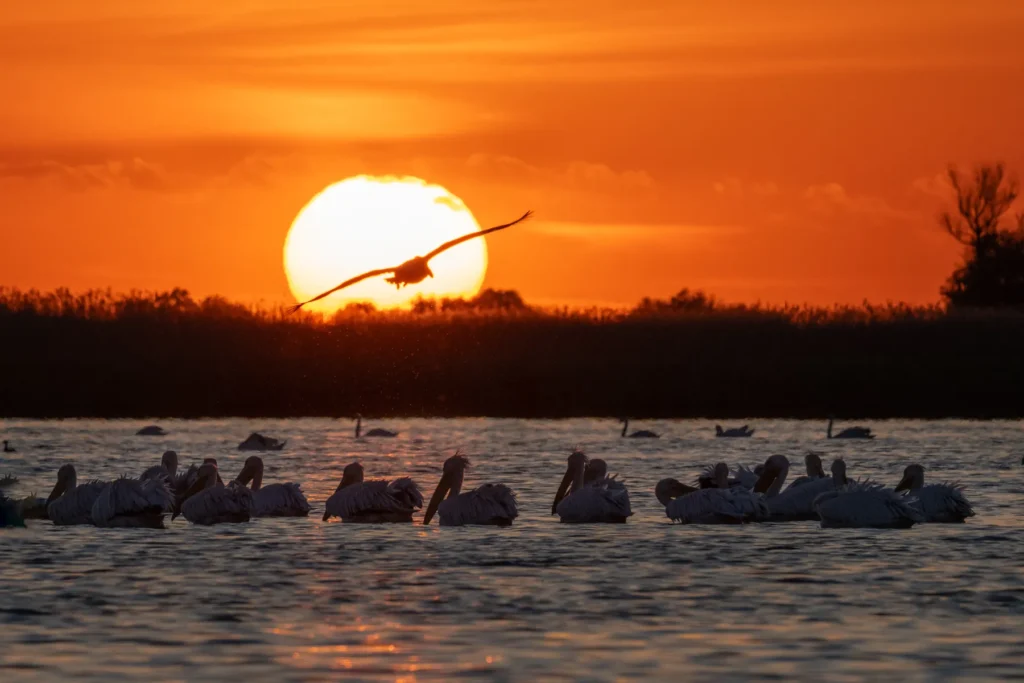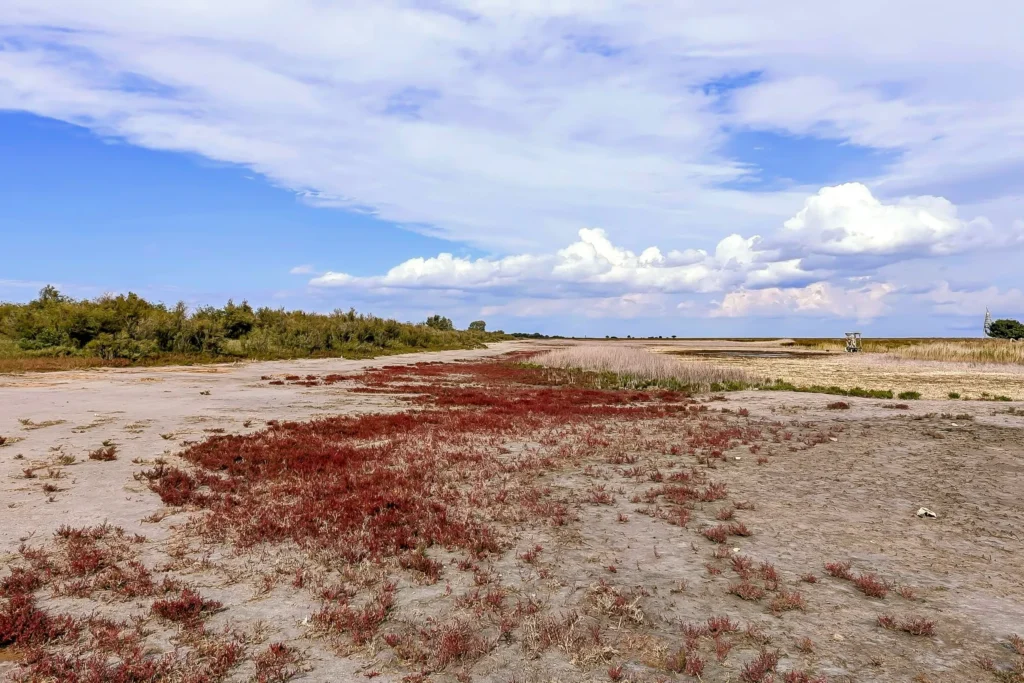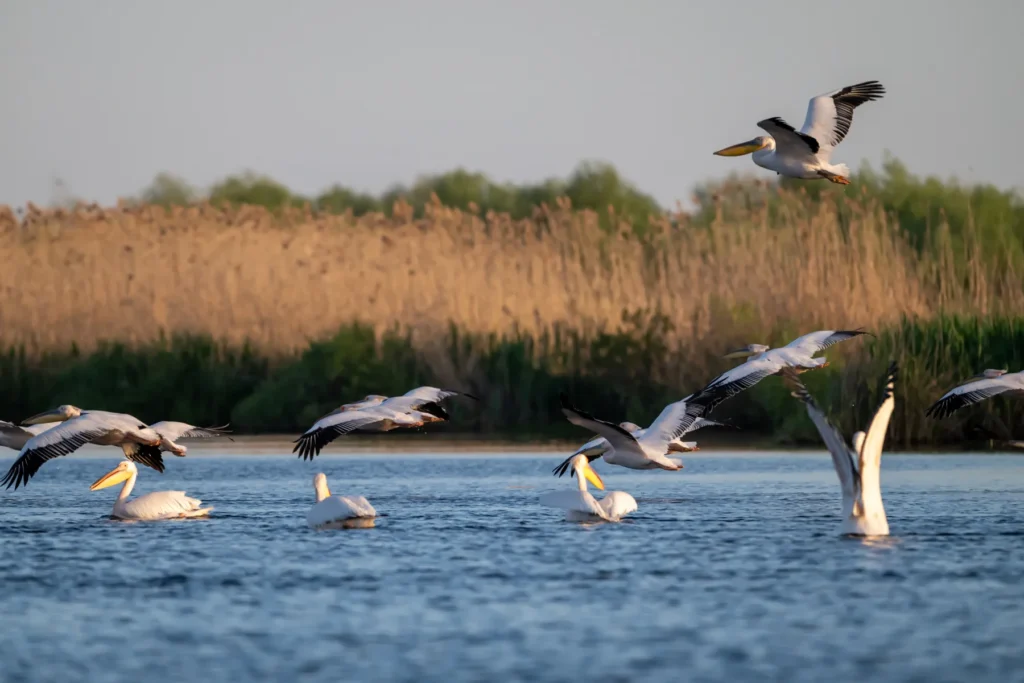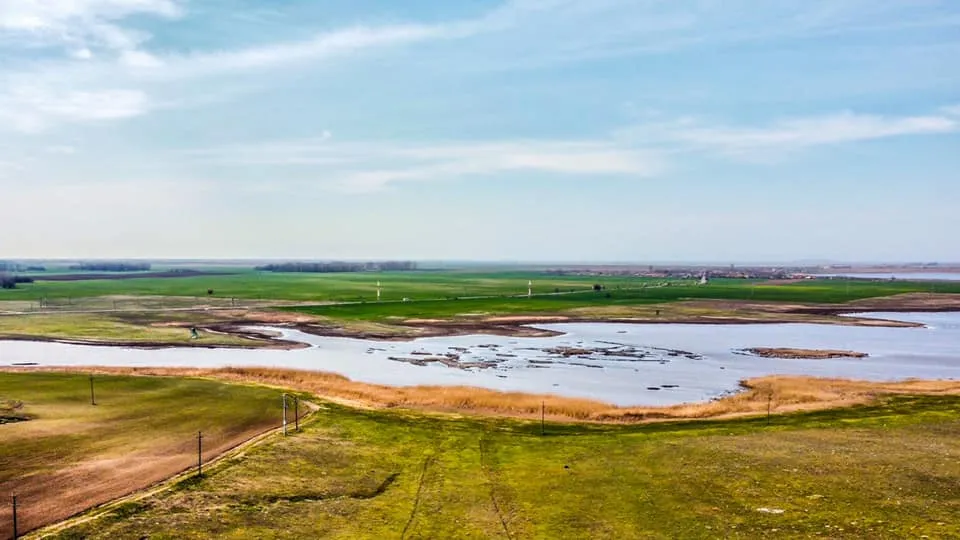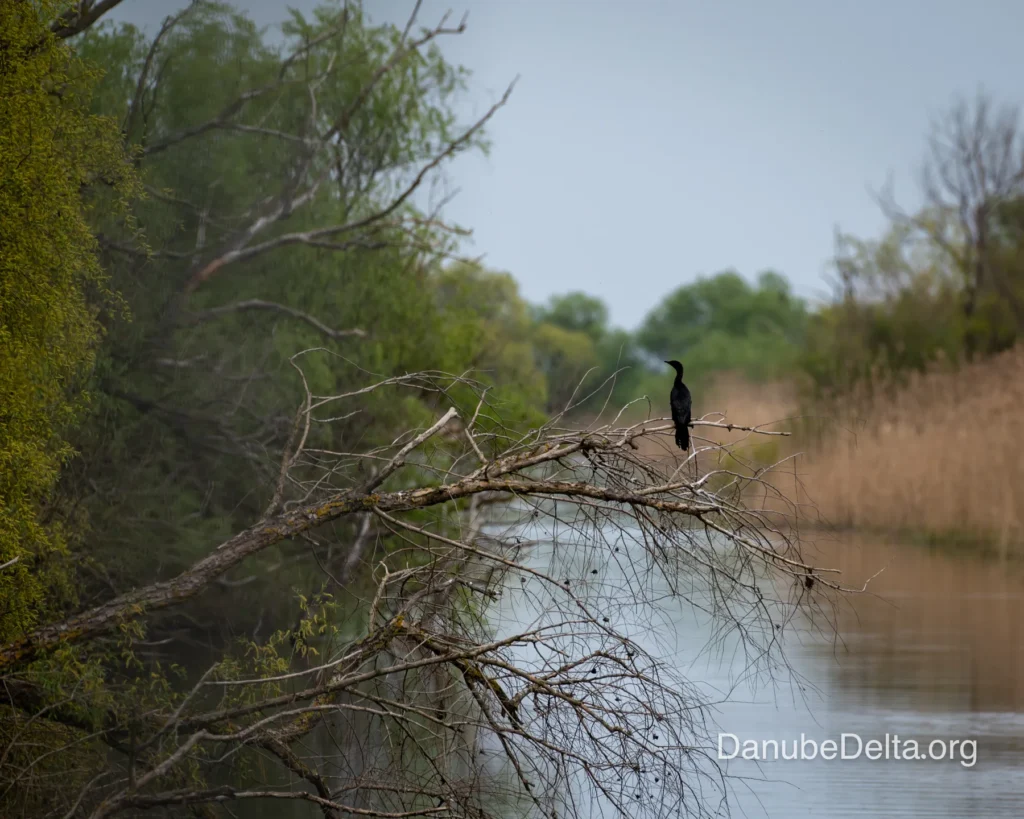Belciug Lake, a strictly protected area in the Danube Delta
Belciug Lake - Danube Delta
- Categories: Integral protected area (IUCN "scientific reserve") in the RBDD
- Surface: ~110 ha
- Localisation: Dranov Islandin the last meander of the St Gheorghe Arm (km 20-25)
- Maximum depth: up to ~7 m
- Administration: Administration of the Danube Delta Biosphere Reserve (ARBDD)
- Safety nets: part of Natura 2000 sites ROSCI0065 and ROSPA0031 (Danube Delta and Razim-Sinoie Complex)
Official status & legal framework
- RBDD is established by Law No 82/1993with functional zoning: strictly protected areas, buffer zone, sustainable development areas etc.; management is provided by ARBDDpublic institution under the Ministry of Environment.
- Belciug Lake is integral protection zone (strictly protected area) established/described by HG No 248/1994 on the delimitation of functional zones in the RBDD.
- At European level, it can be found in Natura 2000 (SCI ROSCI0065, SPA ROSPA0031), according to the updated management documents.
Year of establishment, legal act, administrator
- Reference year for detailed designation: 1994 (HG 248/1994).
- Key acts: Law 82/1993 (establishment of RBDD), HG 248/1994 (zoning and status of ARBDD), RBDD management plan (updates).
- Administrator: ARBDD - Administration of the Danube Delta Biosphere Reserve.
Geographical features
- Precise localisation: in Dranov Island, in the last meander of the St George's Arm (The strictly protected area comprises the lake proper within the limits of the banks at the maximum levels of the Danube.
- Surface: approx. 110 ha.
- Morphology & hydrology: isolated lake, deep (up to ~7 m), different from most lake depressions in the RBDD (often <3 m).
- Physical framework: part of the mosaic of biotopes of the river delta; surrounded by buffer zones protecting Belciug and Sacalin-Zătoane in Dranov complex.
Biodiversity - flora & fauna
- Ichthyology (fish): the lake provides refuge for endangered species or sensitive, such as Carassius gibelio (Carassius gibelio var. auratus), Flax (Tinca tinca) and widow's tit (Rhodeus amarus) - favoured by relatively clear, meso-eutrophic water and aquatic vegetation.
- Mammals: area of feeding/refuge for otter (Lutra lutra), but also other small carnivores (mink, stoats) - typical of the strictly protected areas of the deltaic meadows.
- Birds: important feeding place for magpies, egrets, ducks and, seasonally, cock (Grus grus); connectivity role in the Delta aquatic habitat network for surrounding bird colonies. (Compiled from RBDD management syntheses and teaching/scientific materials).
- Phytoplankton & aquatic flora: synthesis studies indicate a algal complex characteristic of meso-eutrophic waters, compatible with lake depth and isolation data.
Ecological role
- Fish refuge in critical periods (heatwave, oxygen variations), thanks to depth and insulation - contributing to genetic diversity (also referred to as local 'ecotypes').
- "Feeding station for waterfowl in migration and in the breeding season, energetically linking colonies in neighbouring areas (Dranov, Sacalin-Zattoane, Litcov, etc.).
- Key element in the Natura 2000 network of the Delta, supporting conservation objectives for aquatic habitats and species of Community interest.
Threats & conservation efforts
Likely threats (according to RBDD documents and literature for deltaic lakes):
- Eutrophication and hydrological changes affecting fish communities and aquatic vegetation; especially sensitive for water-favouring species mezotrofe.
- Anthropogenic disturbance in adjacent areas (boating traffic in the surrounding canals, illegal fishing outside the strictly protected perimeter) (Deduction based on RBDD regulations and environmental reports.) ddbra.ro
Measures & projects:
- Full protection scheme (restricted access), Dranov buffer zone which "rings" the strictly-protected and management plan updated by ARBDD; monitoring annual reports summarised in the "State of the Environment in the RBDD" reports.
- European funded ARBDD projects for management, monitoring and information infrastructure (at reserve level).
Access & visiting rules (what a tourist can do)
- Important: Lake Belciug is a strictly protected area - public access is forbidden; entry/activities are only possible for scientific or by managementon the basis of ARBDD permits/permissions, according to Law 82/1993 and regulations in force.
- Tourism in the RBDD are on approved routes onlystrictly protected areas (such as Belciug) no is visited by tourists. Respect ARBDD licences (sightseeing, boat, car) and navigation rules.
The ethical experience alternative: observe wildlife in buffer zones or on authorised trails in the neighbourhood (e.g. Dranov, Litcov, Uzlina-Isac), accompanied by a authorised local guide - without entering the Belciug perimeter. (According to the visitation principles established by the ARBDD.)
Events in the Danube Delta
Accommodation to suit all tastes:
Whether you prefer the cosiness of modern villas, the rustic atmosphere of traditional guesthouses or the adventure of camping, they offer a variety of accommodation options to suit your needs and budget.
